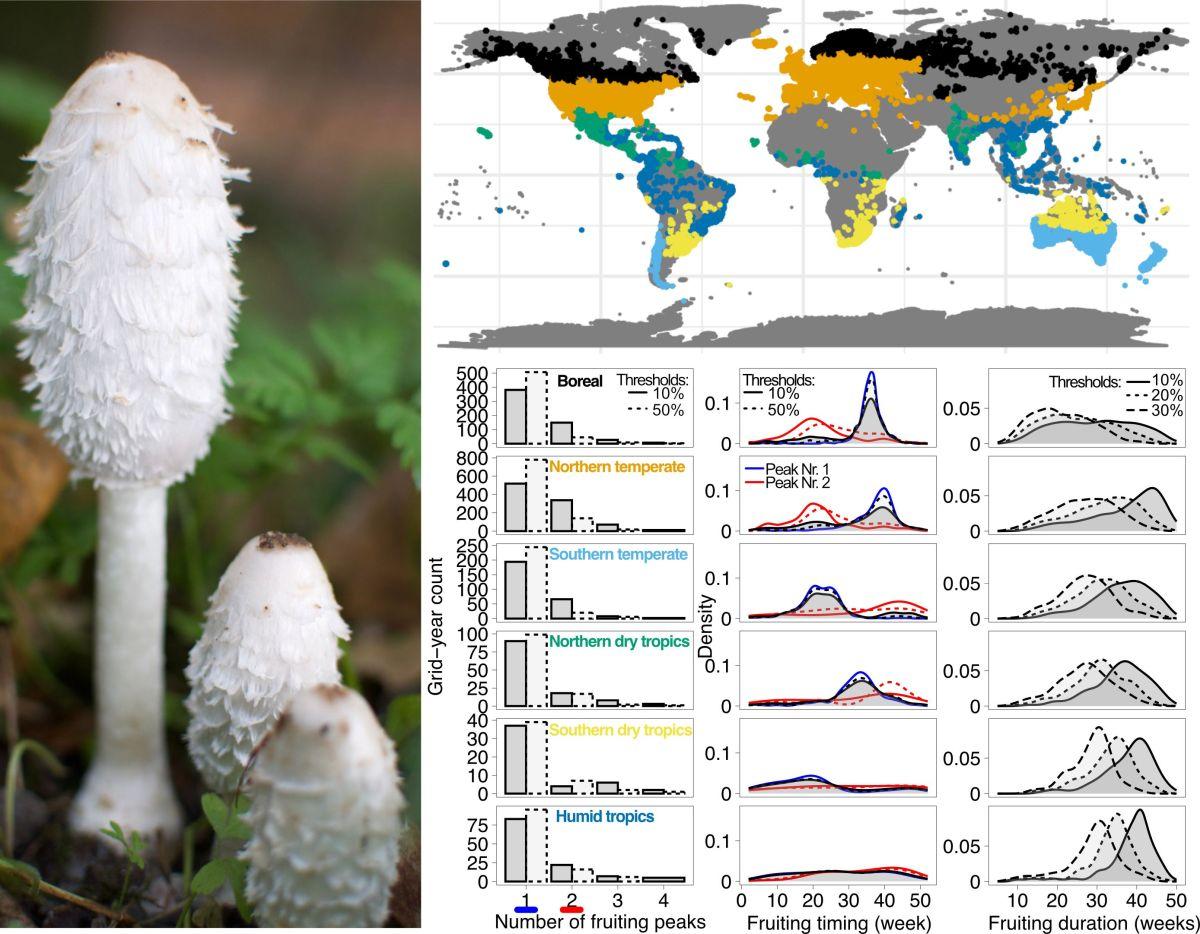Increased Risk Of Invasive Fungal Infections Due To Climate Change

Table of Contents
Warmer Temperatures and Fungal Growth
Rising temperatures are creating ideal conditions for the proliferation and spread of numerous fungal species. This is a direct consequence of global warming and its impact on fungal ecology.
Optimal Growing Conditions
Many fungi thrive within specific temperature ranges. Warmer temperatures, even seemingly small increases, can significantly extend these optimal growth periods.
- Examples of fungi thriving in warmer conditions: Aspergillus, Candida, and various species of Cryptococcus are showing increased prevalence in warmer regions.
- Specific geographic regions experiencing increased fungal activity: Sub-Saharan Africa, South Asia, and parts of Latin America are experiencing a surge in fungal infections, correlating with rising temperatures and humidity.
- Humidity's role: Increased humidity, often accompanying higher temperatures, creates even more favorable conditions for fungal growth and spore dispersal.
Extended Growing Seasons
Longer warm seasons, a direct consequence of climate change, translate into extended periods for fungal reproduction and spore production. This leads to a higher overall fungal biomass and increased opportunities for human exposure.
- Examples of fungi with extended growing seasons: Many opportunistic fungal pathogens, including those causing aspergillosis and candidiasis, exhibit extended growing seasons in warmer climates.
- Impact on agricultural yields and human exposure: Increased fungal growth on crops can lead to spoilage and reduced yields, forcing increased use of fungicides, with potential negative public health consequences. Moreover, prolonged exposure to fungal spores in the environment increases the risk of infection.
Geographic Expansion of Fungal Habitats
Climate change is shifting the geographic ranges of many fungal species, allowing them to colonize previously unsuitable areas. This expansion brings these fungi into contact with new populations, increasing the risk of infection in regions previously unaffected.
- Examples of fungi expanding their ranges: Certain fungal species are migrating towards higher altitudes and latitudes as temperatures rise.
- Risks to previously unaffected populations: Populations in regions experiencing new fungal incursions may lack immunity and appropriate medical infrastructure to cope with these novel threats.
Weakened Immune Systems and Increased Susceptibility
Climate change impacts human health in multiple ways, often weakening immune systems and making individuals more vulnerable to invasive fungal infections.
Climate Change's Impact on Human Health
Extreme weather events (heat waves, floods, droughts), air pollution, and malnutrition, all exacerbated by climate change, can compromise immune function.
- Specific examples of health impacts from climate change: Heat stress can suppress immune responses, while air pollution increases respiratory infections, potentially making individuals more susceptible to secondary fungal infections.
- The link between weakened immunity and fungal infection susceptibility: A weakened immune system is a significant risk factor for invasive fungal infections, allowing opportunistic fungi to proliferate and cause disease.
Increased Prevalence of Co-morbidities
Climate change also worsens pre-existing health conditions, many of which increase susceptibility to fungal infections.
- Examples of co-morbidities: Diabetes, chronic lung diseases, and HIV/AIDS are all exacerbated by climate change and increase the risk of invasive fungal infections.
- How climate change worsens these conditions: Heat waves can worsen diabetes management, while air pollution aggravates respiratory illnesses.
Changes in Vector Ecology and Fungal Transmission
Climate change is altering the ecology of insect vectors and influencing how fungal spores are dispersed, impacting the transmission of fungal infections.
Altered Insect Vectors
Many insects serve as vectors for fungal spores. Changes in temperature and rainfall patterns alter insect populations, influencing fungal dispersal and exposure.
- Examples of insect vectors: Certain insects can carry fungal spores on their bodies, facilitating the spread of fungi to new locations and hosts.
- How climate change alters their distribution and behavior: Changes in temperature and rainfall can affect insect breeding cycles, migration patterns, and overall abundance, influencing the spread of fungal diseases.
- The resulting impact on fungal spread: Altered insect populations can lead to shifts in the geographic distribution and prevalence of fungal infections.
Increased Environmental Exposure
Changing weather patterns, including increased flooding and extreme weather events, increase human exposure to fungal spores in the environment.
- Specific examples of environmental exposures: Flooding can disperse fungal spores widely, increasing exposure for large populations. Dust storms can also carry fungal spores over long distances.
- The resulting increase in infection risk: Increased environmental exposure to fungal spores directly contributes to a higher risk of infection.
The Impact on Global Public Health and Healthcare Systems
The surge in invasive fungal infections poses a significant threat to global public health and places immense strain on healthcare resources.
Strain on Healthcare Resources
The increasing number of fungal infections is straining healthcare systems worldwide, leading to resource shortages and potential delays in treatment.
- Examples of resource strains: Hospitals may face shortages of antifungal medications, diagnostic tools, and trained personnel to manage the increase in cases.
- The impact on healthcare access and outcomes: Delays in diagnosis and treatment can lead to poorer patient outcomes and increased mortality.
Economic Burden of Fungal Infections
The rise in invasive fungal infections carries a substantial economic burden, encompassing treatment costs and lost productivity.
- Examples of economic impacts: The cost of antifungal medications, hospital stays, and long-term care for patients with invasive fungal infections is significant. Lost productivity due to illness also contributes to the economic burden.
- The need for increased funding for research and preventative measures: Addressing this challenge requires increased investment in research to develop new antifungal drugs, diagnostic tools, and preventative strategies.
Conclusion
The evidence strongly links climate change to an increased risk of invasive fungal infections. Warmer temperatures, extended growing seasons, altered vector ecology, and weakened human immune systems all contribute to this growing public health threat. The strain on healthcare resources and the significant economic burden underscore the urgency of the situation. Understanding the increased risk of invasive fungal infections due to climate change is crucial. Learn more about this critical issue and take action to mitigate the effects of climate change to protect public health. Support research into fungal infections and their prevention, and advocate for policies that address both climate change and the growing threat of invasive fungal diseases. Visit the CDC and WHO websites for more information on fungal infections and climate change's impact on global health.

Featured Posts
-
 Remembering The Idf Soldiers Held Hostage In Gaza
May 26, 2025
Remembering The Idf Soldiers Held Hostage In Gaza
May 26, 2025 -
 Addressing Excess Water Use A North Myrtle Beach Public Safety Issue
May 26, 2025
Addressing Excess Water Use A North Myrtle Beach Public Safety Issue
May 26, 2025 -
 Idf Prisoners Of War In Gaza Their Stories Of Capture And Survival
May 26, 2025
Idf Prisoners Of War In Gaza Their Stories Of Capture And Survival
May 26, 2025 -
 Nouveau Jeu Rtbf Vivez Le Tour De France Comme Jamais
May 26, 2025
Nouveau Jeu Rtbf Vivez Le Tour De France Comme Jamais
May 26, 2025 -
 2025s Best Nike Running Shoes Your Ultimate Buying Guide
May 26, 2025
2025s Best Nike Running Shoes Your Ultimate Buying Guide
May 26, 2025
